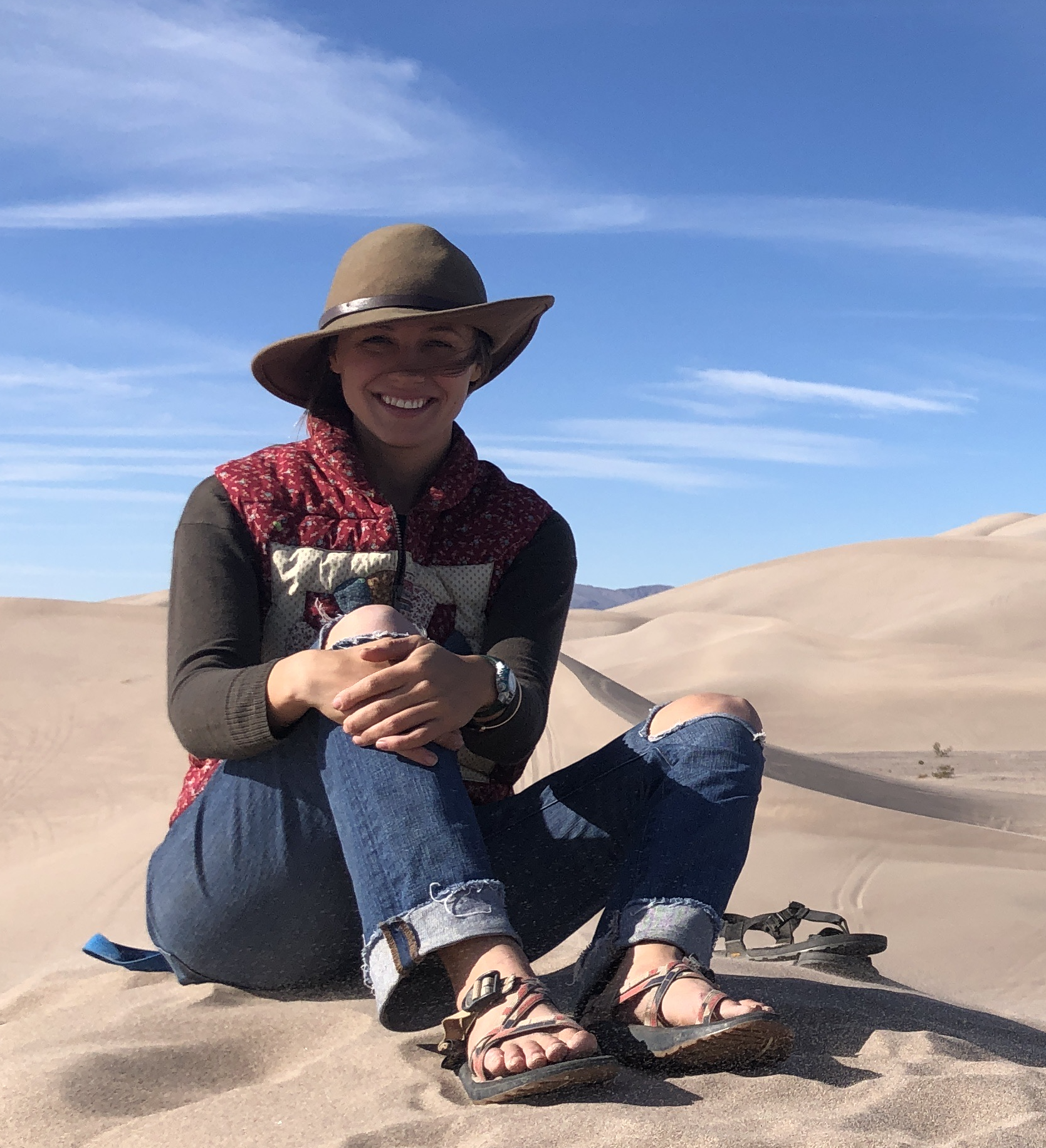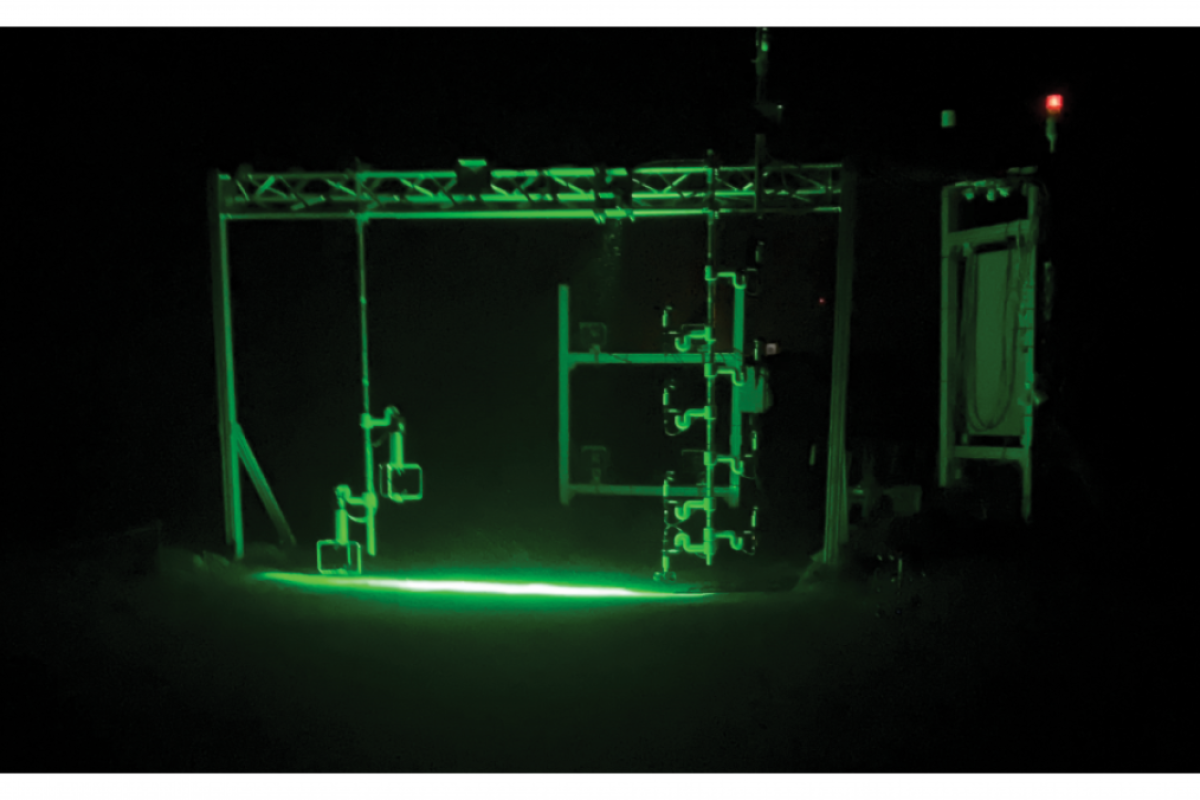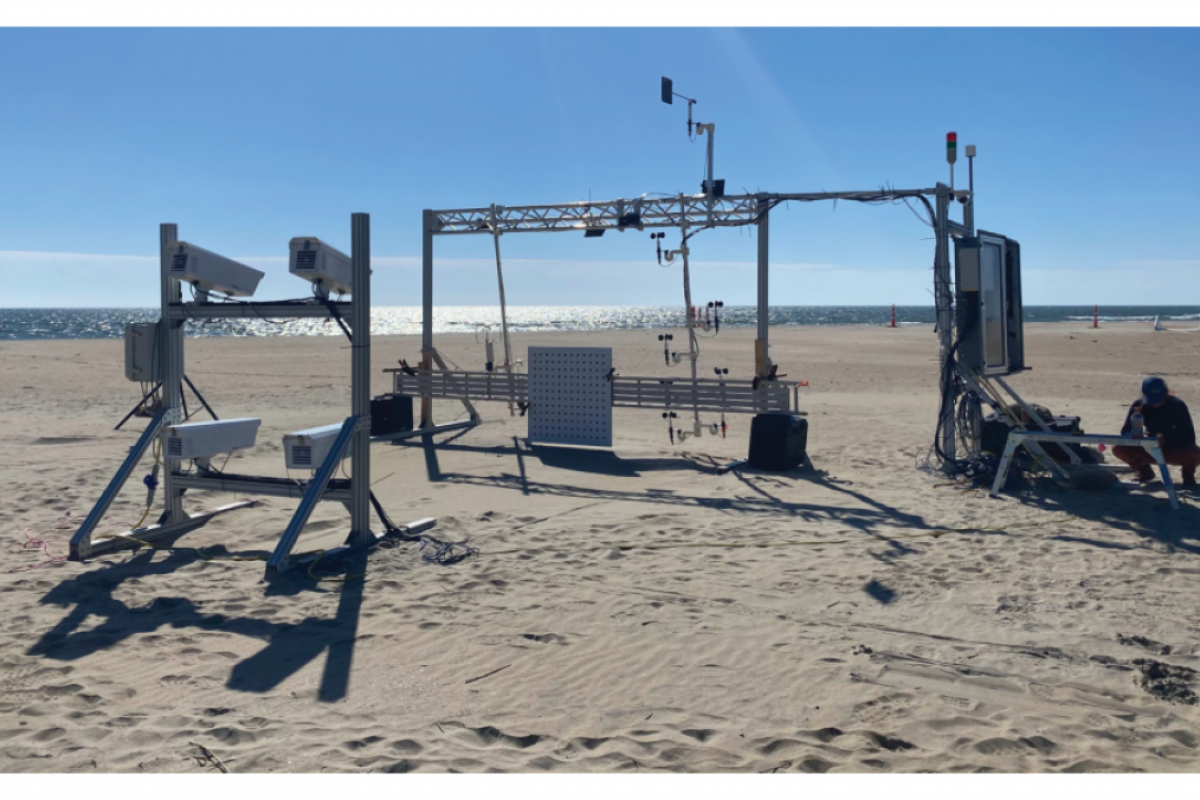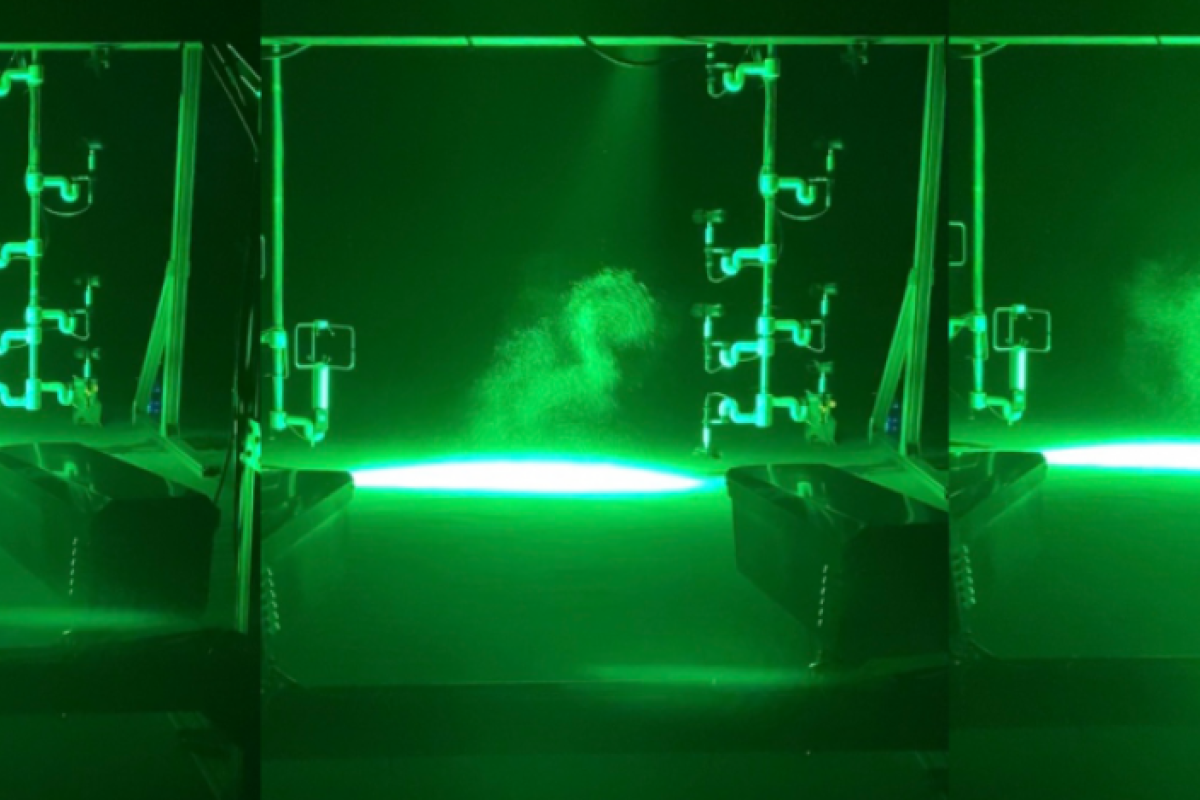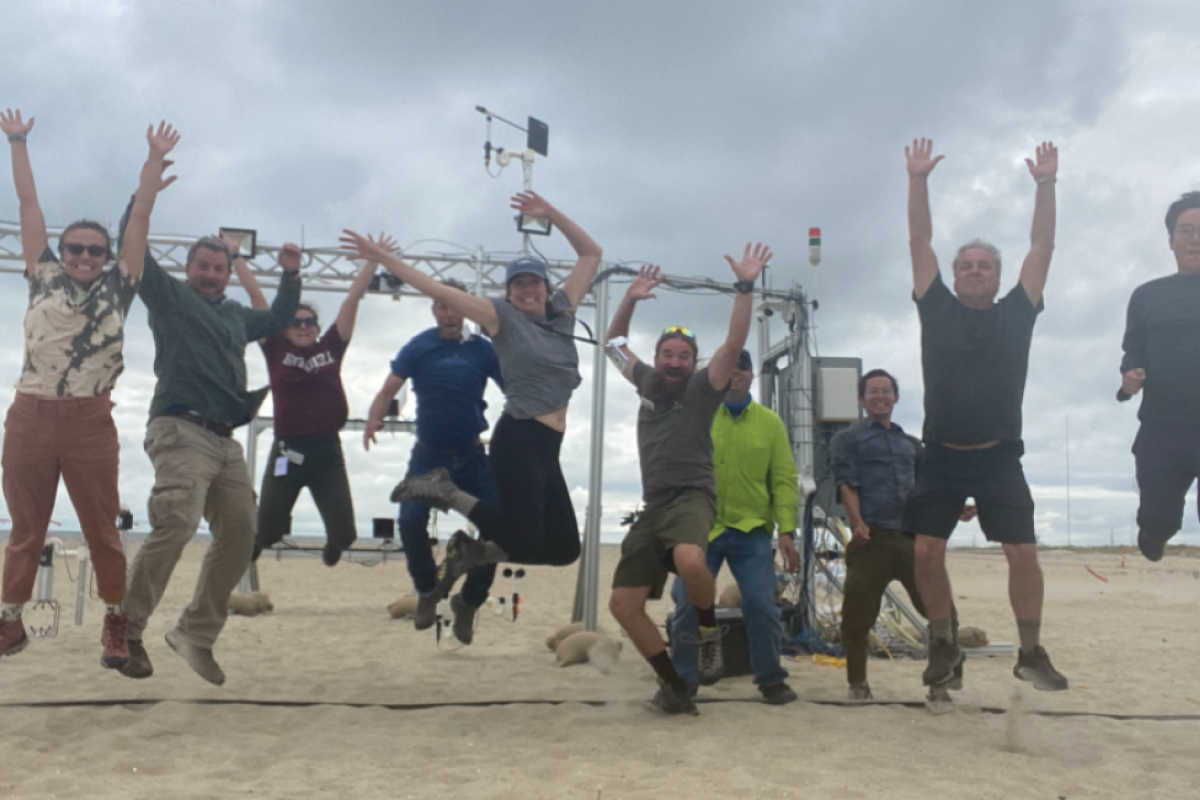Seeing the wind: High-res images reveal its influence on beach environments

The Particle Tracking Velocimetry (PTV) system on a beach in Wallops Island, Virginia. Photo courtesy Madeline Kelley
On a dark, windy evening on Wallops Island, Virginia, this past fall, Maddy Kelley stood on the beach watching wind and sand pulse along the beach, driven by eddiescircular currents of water and illuminated by neon green lasers.
Kelley, a PhD student in Arizona State University’s School of Geographical Sciences and Urban Planning and a geomorphologist who works to quantify and predict the movement of sediment, was part of an international team of scientists and engineers, led by Christy Swann from the U.S. Naval Research Laboratory, conducting research to better understand the natural processes of sandy beach environments.
Using advanced instrumentation they developed, Kelley and the team successfully captured first-of-its-kind data – high-resolution images of both sand and wind turbulence in natural terrain.
“Historically, it's pretty hard to image sand and wind at the same time; the wind on a beach can quickly change, and you have to be able to adapt to that,” said Kelley, who spent a month at a NASA field site working on the project. “We have a powerful laser that scatters visible light up as helium bubbles flowing in the wind and sand grains move through our measurement volume. The cameras can take images anywhere from 400 frames to 1,200 frames per second.”
The researchers aim to use the new images to unravel new understandings of the physics of turbulence and how sediment travels by wind. Ultimately, the research will provide valuable information for models on what may need to be done to preserve beach environments in the future.
ASU PhD student Madeline Kelley was part of a research team in Wallops Island, Virginia, that captured the first high-resolution images of both sand and wind turbulence in natural terrain. Photo courtesy Madeline Kelley
“Our coastal regions are extremely important and vulnerable to climate change. Without good data and models, these environments — and the humans that interact with them — are susceptible to wave inundation.”
The data was collected using a Particle Tracking Velocimetry (PTV) system that the team developed. The 4-by-3 meter metal-framed apparatus consists of lasers, high-speed cameras and traditional sensors measuring turbulence and wind-blown sand.
“Coming up with a system where our equipment can collect this data, shift to the changing conditions and not break has taken years of prototyping,” said Kelley, who noted that natural beach environments undergo chaotic changes in air pressure and wind velocity that cannot be replicated in controlled lab settings. “It combines traditional instruments that measure the wind and sand transport at different heights with a high-resolution imaging system.”
Current models studying how wind moves sand, or aeolian sediment transport, historically have performed poorly due in part to limitations of available instrumentation that can measure and incorporate natural boundary layer turbulence.
The newly captured wind turbulence data provides key information at a resolution not previously available that researchers hope to use to better predict future environmental changes and improve current modeling techniques.
“We're trying to better understand the physics of windblown sand, and for the first time, we can visualize and quantify the relationship between turbulence and transport,” Kelley said. “We’ve proven that (our instrumentation) can work, we can get these high-resolution images in such a harsh environment, but there's still much more to do.”
More Environment and sustainability

Mapping the way to harvesting water from air
Earth’s atmosphere contains about 13 trillion tons of water.That’s a lot of water to draw upon to help people who are contending…

ASU researchers test environmental risks of tire emissions on Arizona highways
The Greater Phoenix area’s roadway grid system is the envy of urban planners everywhere, and the Arizona…

A 6-month road repair that only takes 10 days, at a fraction of the cost? It's reality, thanks to ASU concrete research
While Arizona’s infrastructure may be younger than its East Coast counterparts, the effects of aging in a desert climate have…


